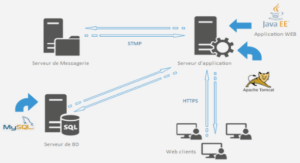In a network without centralized resource management, transmitter and receiver nodes are isolated, in the sense that they do not exchange information, and are thus required to design transmit and receive strategies based on locally available information. This information includes channel state information (CSI) which is either estimated using uplink pilots in time-division-duplex systems (TDD) or obtained by feedback from receivers in frequency-division-duplex systems (FDD). With only locally available CSI, transmitters are not aware of other important information such as other transmitters’ data or channel realizations. To obtain such non-local information, some backhaul communication is required. As backhaul communication among transmitters consumes system resources or may not be possible in certain situations, such as spectrum sharing among different operators, in this manuscript, we do not consider user payload data sharing that would allow for strong cooperation schemes such as joint transmit strategy designs, e.g. network MIMO.
We assume that the transmitters have a common objective, such as the system sum rate. In a competitive game theoretic framework (which has been considered for this type of channel in the literature) one may assume that the transmitters have an egoistic incentive and maximize their own rate while ignoring the excess interference generated towards other receivers in the network. However, if every transmitter in the network is egoistic and transmit at its best response strategies, the system converges to the Nash Equilibrium, assuming its existence. At the Nash Equilibrium, no transmitters (or players) have incentive to deviate from this operating point and it can be shown that this point generally results in a high amount of interference for all receivers. Hence, it is reasonable for the transmitters to cooperate and have a common objective, as long as there is a reward of cooperation compared to the Nash Equilibrium.
In this thesis, we consider point-to-point transmission in the network which is a general model with applications such as the cellular network and focus on the spatial structure of the interference channel. In the multiple-input-multiple-output interference channel (MIMO-IC), the multiple antennas at each node can be exploited to improve the information theoretic capacity by choosing the transmit and receive strategy carefully. Interference alignment (IA) is one example where the transmit and receive beamformers are chosen such that the interference signals at each receiver in the network align within a subspace with smaller dimension than the number of receive antennas. In this case, the interference can be nulled out by a simple zero-forcing receive beamforming vector. By sacrificing some degrees of freedom (DOF) for interference nulling, the transmitters and receivers in the network enjoy interference free communication, assuming the feasibility of interference alignment. However, interference alignment does not maximize sum rate in all SNR regimes.
The notion of interference channel is introduced by Shannon [58]. In [11], Caleial discusses in details different achievable rates regions on the 2-user SISO-IC with deterministic channel gains. The impact and performance of different decoding schemes, such as full or no interference decoding, partial interference decoding and different capacity outer bounds such as a multiple access channel outer bound, are discussed. Then, the capacity region in the strong interference scenario was proposed by Sato [51] and Han and Kobayashi [21]. The capacity region in the strong interference case is a pentagon which contains the subcase of the very strong interference scenario which has a capacity region of a rectangle. By allowing rate splitting and partial interference decoding, Han and Kobayashi proposed an achievable scheme which achieves the best inner bound to date. These results are then extended the results to the Gaussian Interference channel [16].
However, the capacity of the SISO interference channel is still an open problem, except for several special cases, such as the noisy or low interference regime in which treating interference as noise and employing Gaussian input alphabets achieve capacity [4, 55]; the strong and very strong interference regime in which decoding interference and then subtract it from the received signal before decoding the desired signal is optimal [11,21,52]; the mixed interference regime, where one cross interference gain is stronger than direct channel gain and the other link weaker, in which case the sum rate capacity is shown to be attained by one user decoding interference and the other user treating interference as noise .
Since the establishment of the IC capacity region in the most general information theoretic sense is still an open and difficult problem, we address here a sub-region of the capacity region (denoted as MISO-IC and MIMO-IC) assuming simple linear pre processing and zero or full interference decoding at the receiver. Note that since we do not consider partial interference decoding at the receivers, we are considering an achievable rate region within the Han-Kobayashi region. Although we sacrifice some achievable rate points, this assumption allows us to simplify the formulations and focus on the spatial structure of the problem.
We emphasize the importance of the boundary of such an achievable rate region, which we denote as the Pareto boundary. It holds importance in both information theory and bargaining theory as any point on the Pareto boundary satisfies the following definitions: assuming transmit and receive beamforming vectors, it is impossible for any player to increase its rate without decreasing other players rate. The Pareto boundary of MISOIC and its characterization have gained much attention in the communication theory community since its introduction in [31, 73].
The authors, in particular [31], characterize the Pareto boundary in the general K users MISO-IC by providing a parameterization of the transmit beamforming vectors as a linear combination of interference channel coefficients with complex weights. In the two-user case, the Pareto optimal beamforming vectors of each Tx only depend on one real valued parameter that takes values between zero and one. On the other hand, in [73], the authors draw the connection between the MISO-IC Pareto boundary characterization and the sum rate optimization problems on the cognitive radio. The Pareto boundary attaining beamforming vectors are the optimal solutions of the sum rate optimization problems with given interference temperature constraints. The resulting characterization of the beamforming vectors are different from [31]; the characterization in [31] uses K(K − 1) complex coefficients for the K user MISO-IC but can be generated directly from the parameterization of the beamforming vectors whereas the characterization in [73] uses K(K − 1) real coefficients but the beamforming vectors are the solutions of some optimization problems. Both approaches provide insights into the problem structure and algorithms to operate arbitrarily close to the Pareto boundary. On the other hand, the computation of the maximum sum rate point and the corresponding beamforming vectors, is shown to be a NP-hard problem [39].
1 Introduction |



